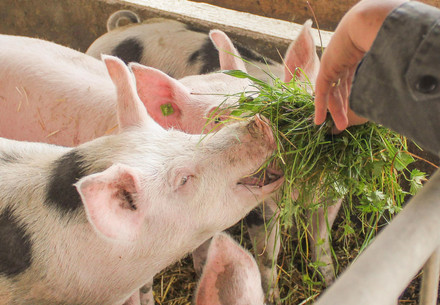Farm Animal Welfare for Better Public Health
Factory farming endangers animal and human health
Through its significant impact on the environment and the conditions in which farm animals are kept, factory farming fuels the risk of infectious diseases in both humans and animals, as well as the threat of antimicrobial resistance.
To protect human health, it is crucial to improve the welfare of farmed animals and reduce the overall number of animals raised for farming.
To achieve this, FOUR PAWS is working with international institutions and policymakers to prioritise the welfare of farmed animals in their plans to combat public health threats.
Why is factory farming the problem?
Did you know that zoonoses — diseases that spread between animals and humans — account for roughly 60% of all infections in humans and 75% of all emerging infectious diseases?1 They are responsible for around 2.5 billion cases of human illness and approximately 2.7 million human deaths each year.2 This situation is likely to worsen as intensive farming expands and intensifies.3 We cannot allow this to happen.
The cruel conditions in which animals are kept in factory farms create the perfect environment for pathogens to amplify, mutate, spread and to develop antibiotic resistance. Factory farming is the main driver of agricultural expansion, leading to significant changes in land use.4,5 This expansion disrupts the natural boundaries between ecosystems, creating environments where pathogens thrive and are transmitted between wild animals and humans.6 Intensive farming is also fuelling climate change and biodiversity loss.7,8 All these factors lead to the emergence and spread of infectious diseases.






